The 1944 Portmore Lough Christmas Eve crash remembered
- Published
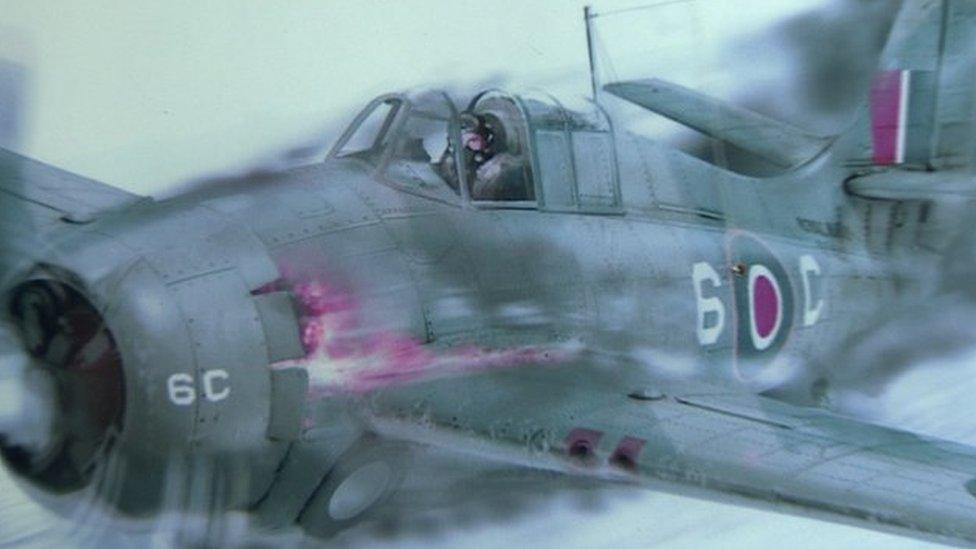
A drawing of Peter Lock's Wildcat catching fire before ditching in the lough
'Twas the day before Christmas 1944 and not a creature was stirring... when there arose such a clatter.
The clatter was the sound of an aircraft engine exploding as it swooped low over Portmore Lough at Ballinderry near Aghalee.
The Royal Navy pilot had just taken off from nearby Long Kesh airfield on a training flight when he got into trouble.
With flames and smoke pouring from the engine of his Grumman Wildcat war plane, he quickly realised his only hope was to ditch in the water on the edge of Lough Neagh.
Fleet Air Arm Sub Lieutenant Peter Lock survived the Christmas Eve crash and was rescued by local people in a rowing boat.
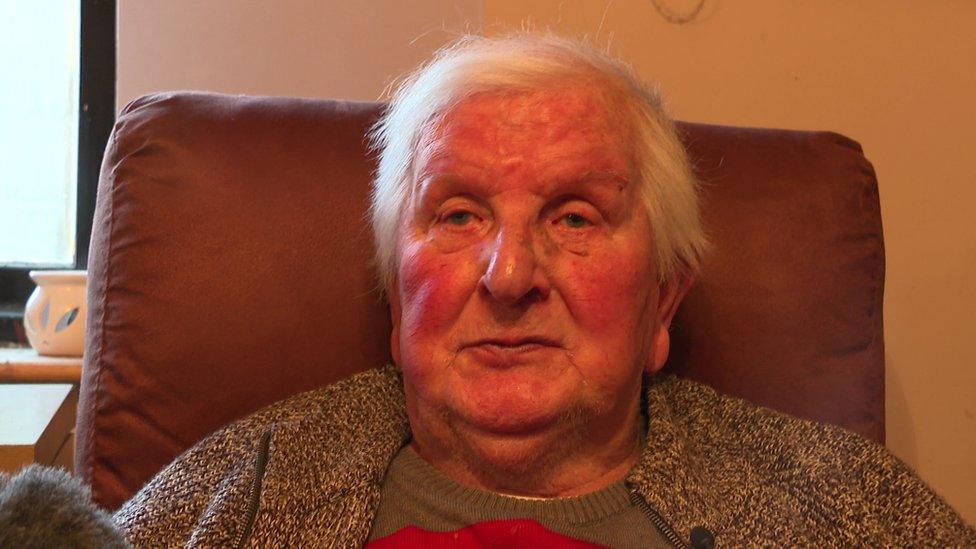
Seamus Kane was a schoolboy when he helped with the Wildcat rescue
When they got him ashore, they were astonished to discover when he took off his flying suit, he was dressed in his officer's uniform.
He explained that he was due at a Christmas Eve mess dinner that evening.
When he attended that soirée, he got a merciless ribbing because his smart, newly purchased officer's uniform was stained yellow with the dye that was automatically discharged from his life jacket when he hit the water. This was used to help air-sea rescue teams track ditched pilots.
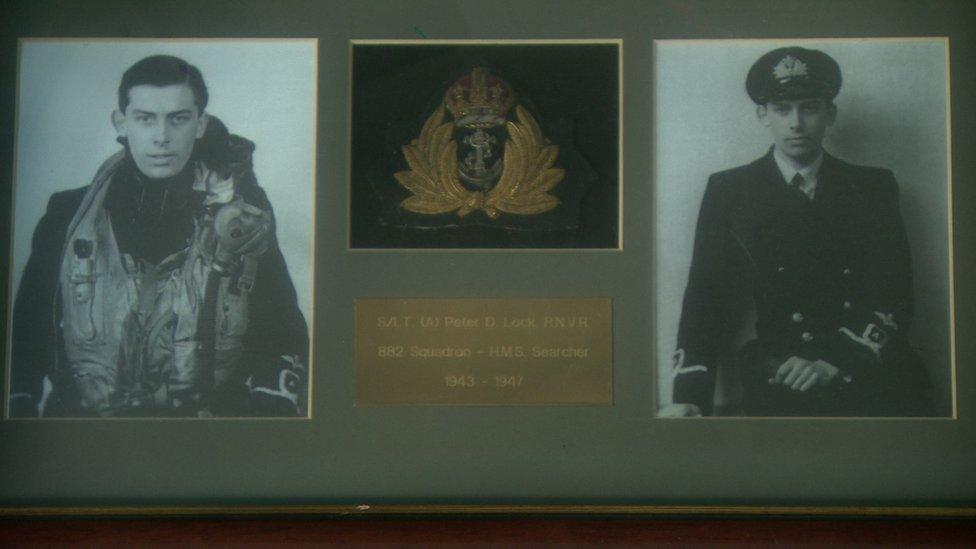
Peter Lock pictured in his pilot and officer uniforms
Peter Lock recalled the events of that day, some years later.
"This was Christmas Eve and the water was very cold. People rowed out and got me ashore," he said.
"In the Navy there's a tradition of officers serving dinner to the men on Christmas Eve and the gesture is reciprocated on Christmas Day."
He added that, before his flight, he changed into his uniform so that he wouldn't be in a rush to change when he landed back at base.
He added that he "subsequently had the uniform cleaned four times but the dye never really went away".
'I'm going to a party tonight'
The pilot returned to Northern Ireland several times after the war and later met one of his rescuers, Seamus Kane, who, as a schoolboy, had watched the Wildcat go down and raised the alarm.
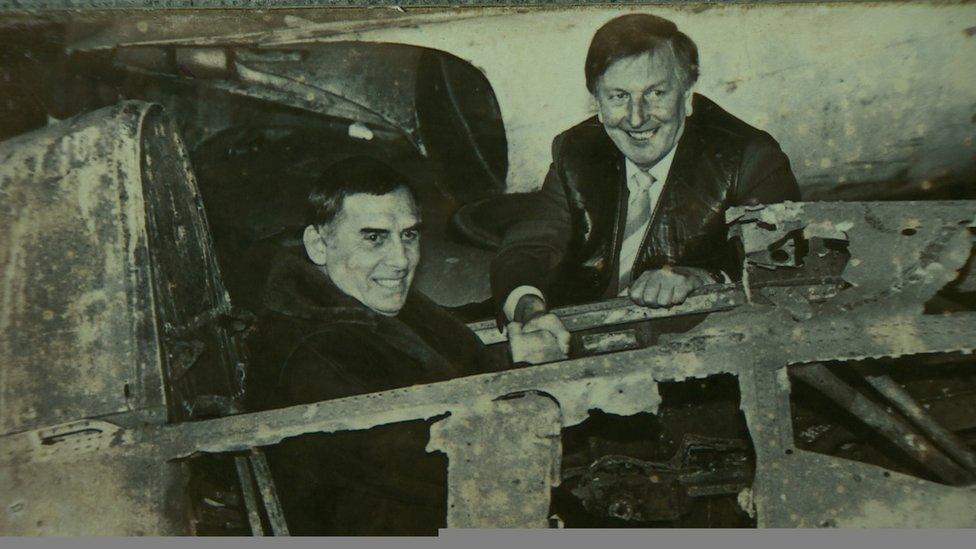
Peter Lock (left) and one of his rescuers, Seamus Kane, (right) who was a schoolboy when he saw the crash
"We saw smoke pouring from the engine of the plane...and it just went into the lough, like a duck landing on water" says Seamus, who is now in his 80s.
"I ran into the house and my sister was there putting up holly and my two brothers were also there.
"They went outside and saw the pilot climbing out onto the tail of the plane. So they drove around to the old church graveyard and met up with the lough caretaker and together they got into a boat and went out to rescue him."
When they reached the crashed plane, they noticed the pilot was soaking wet but he had only one thing on his mind when he spoke to his rescuers.
(He said:)"'Look at the state of me... and I'm going to a party tonight.'"
The crashed Wildcat, which was virtually intact, remained in Portmore Lough until 1984 when it was winched out of its muddy resting place by an Army helicopter, eventually finding its way to the Ulster Aviation Society, who planned to rebuild it.
The project is still ongoing 35 years later as the society's chairman Ray Burrows explained.
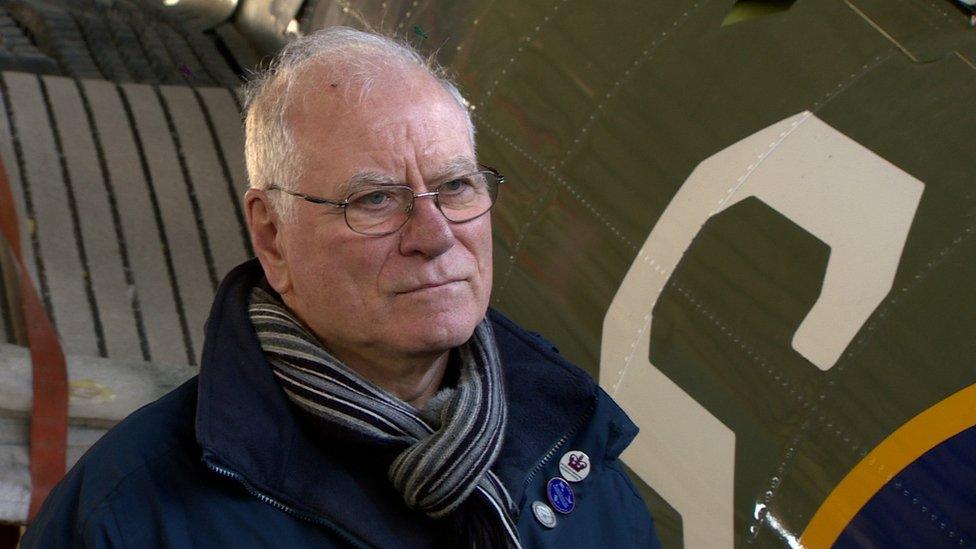
The Ulster Aviation Society's Chairman Ray Burrows said they had to build the plane back up with parts
"It's a Mark Five Grumman Wildcat and is one of only three of its type left anywhere in the world."
It became the very first aircraft the society took ownership of for a collection.
He added: "The pilot, Peter Lock, became a good friend of the society in later years and when I spoke to him about the crash he always appeared to be more upset about his uniform being destroyed by the fluorescent dye rather than writing off his aircraft."
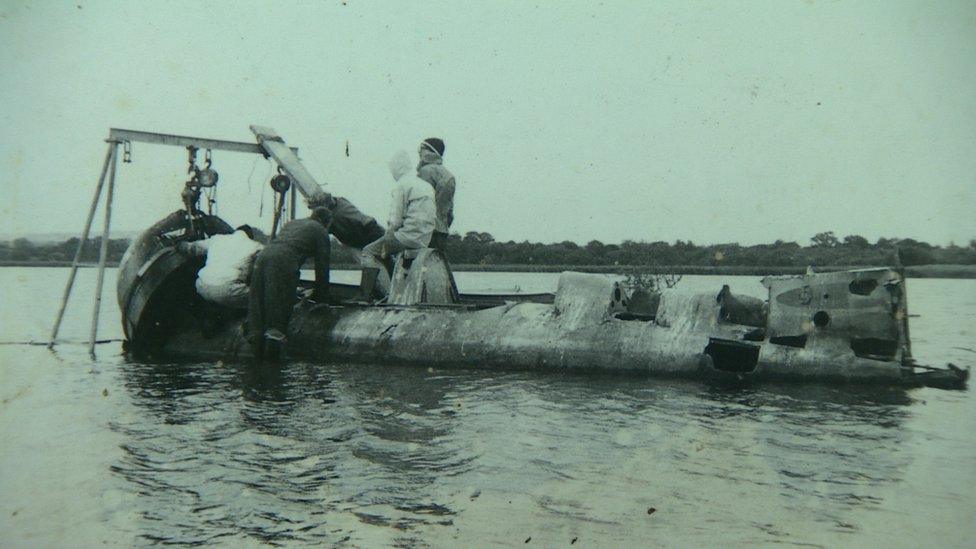
The wreckage of Lock's wildcat being lifted from Portmore Lough
Over the decades as the aircraft lay partially submerged in the lough, it was stripped of some of its parts by souvenir hunters and the weather also took its toll.
Ray explained one of the main reasons it has taken so long to put the Wildcat back together.
"This was an American aircraft and, unfortunately, the US does not release military drawings of aircraft or any war equipment, even though this is 70 years old."
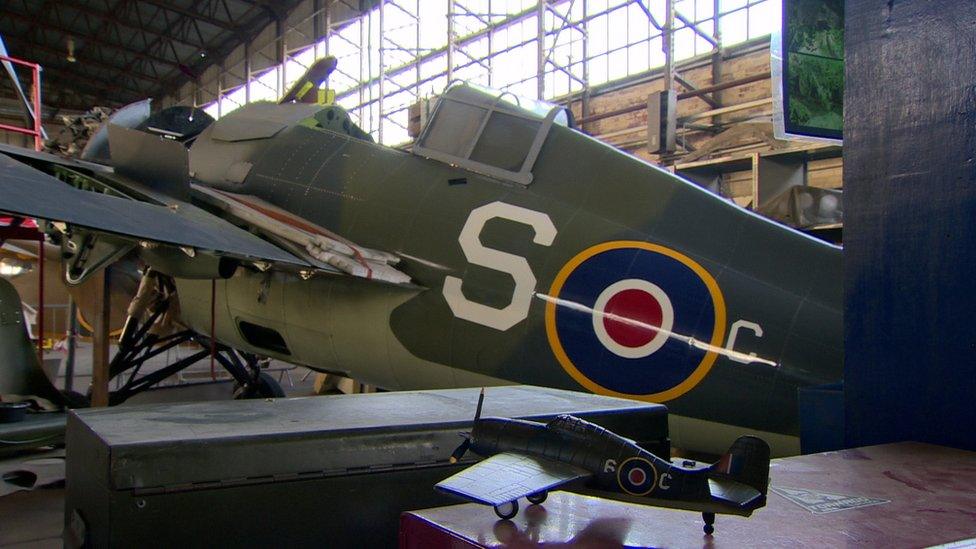
The original plane has been restored by the Ulster Aviation society
He explained that the society could not obtain the original drawings to make replacement parts.
"There is no real information about how the bits all go together so we have been working from scratch."
Portmore Lough is now an important wildlife sanctuary run by the Royal Society for the Protection of Birds.
Robin Brown is one of the volunteers and he knows nearly as much about the Wildcat as he does about the Whooper swans that are currently feeding on the lough.
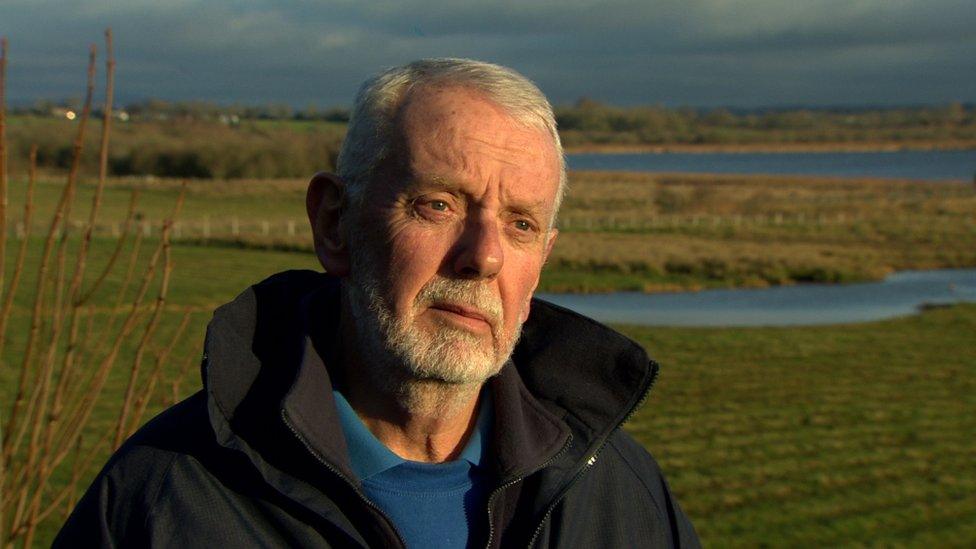
Robin Brown is a volunteer at Portmore Lough
"For decades, the plane wreck was a feature on the lough amongst the local people who knew all about it after the rescue of pilot Peter Lock .
"It would have been perched on at times by birds and they may even have nested on it but it didn't really play any major part in the birdlife on the lough.
"The fact that it was buried in mud on what is a very shallow lough meant that there was very little corrosion and the aircraft was quite well preserved."
While the aircraft is no longer there, the story of the "Wildcat landing amongst the birdlife" is featured on the information boards around the sanctuary.
And 75 years since the crash- the memory of how Peter Lock splashed his name in the lough's history lives on.